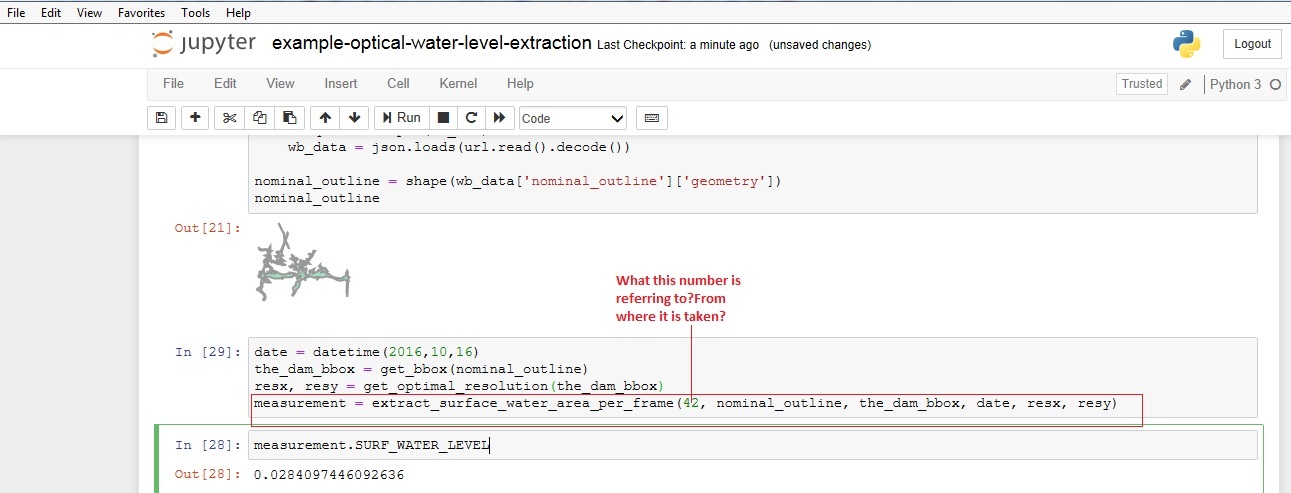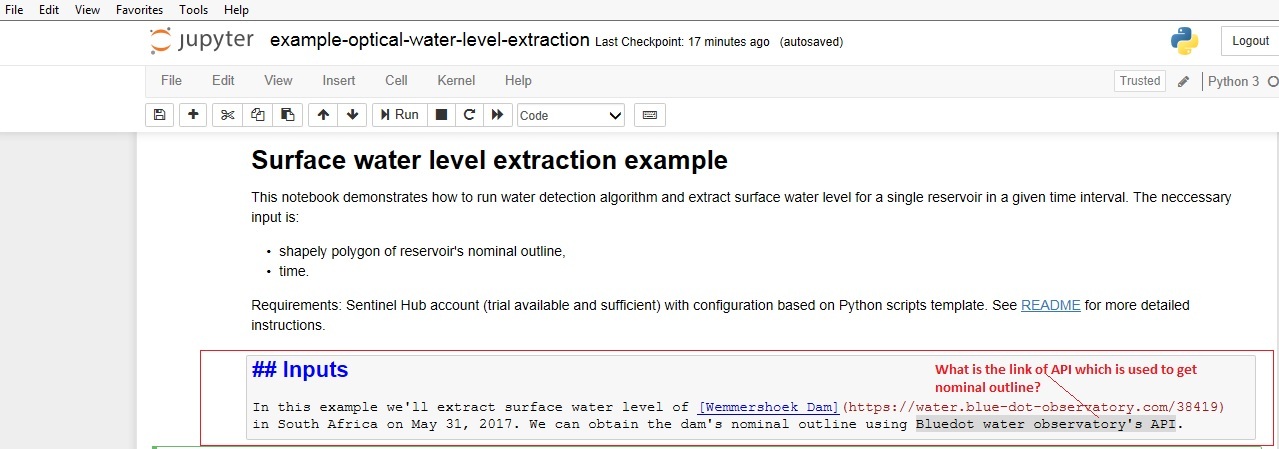While exploring example "example-optical-water-level-extraction " I have some doubts:-
- Here one number is used in ‘extract_surface_water_area_per_frame’.What that number refer to and from where that number is taken?
-
I also want to know Bluedot Water Observatory’s API link used for calculating nominal outline



